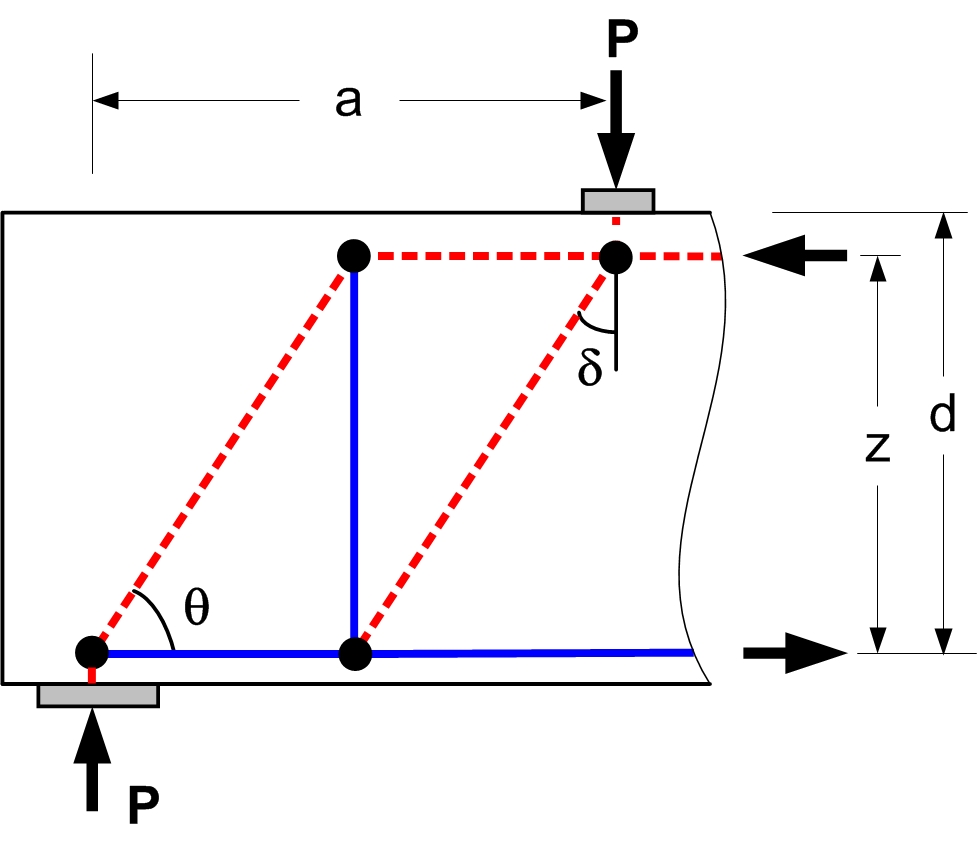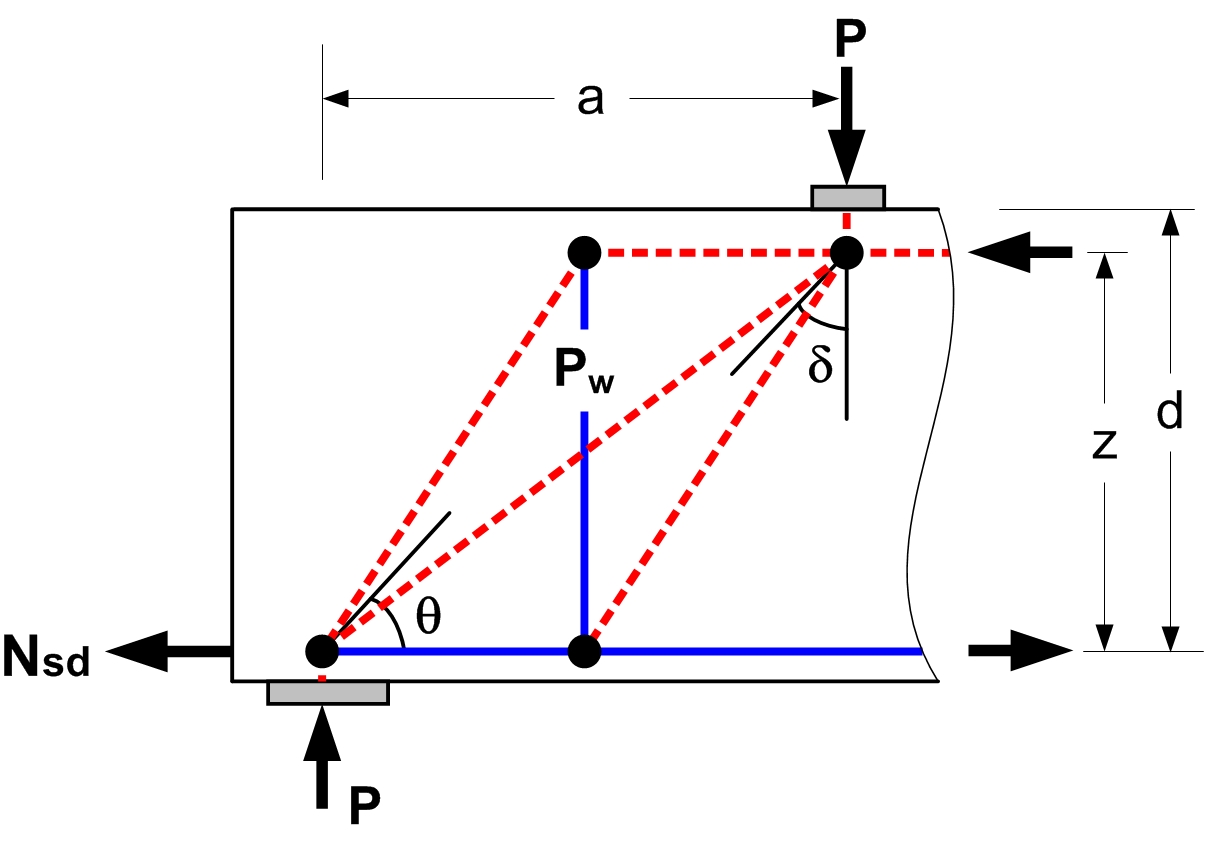| Design of deep beams subjected to concentrated load (1) |
|---|
| Writer | admin | Date | 2020.01.18 | Hit | 667 |
|---|---|---|---|---|---|
| File | Design-*//Example-01.jpg01_Deepbeam_Combined_SI.stm | ||||
1. Design of deep beams subjected to concentrated load
1.1 Introduction
The strut-tie model design of simply supported deep beams is usually conducted by the determinate strut-tie models representing an arch mechanism shown in Fig. 1-1(a), or a truss mechanism shown in Fig. 1-1(b). The cross-sectional forces of struts and ties in these types of strut-tie models are determined regardless of the stiffness of struts and ties.

(a) Strut-tie model representing arch mechanism

(b) Strut-tie model representing vertical truss mechanism

(c) Strut-tie model representing combined mechanism
Fig. 1-1 Typical strut-tie models for reinforced concrete deep beams
The CSA (2004) and AASHTO LRFD (2014) have suggested a basic concept of a strut-tie model that satisfies equilibrium and constitutive relationships, and they have allowed the design of reinforced concrete deep beams with the strut-tie model shown in Fig. 1-1(a). This has influenced the ACI 318-14 (2014) to allow the same model for the reinforced concrete deep beams with the requirement that the angle between a concrete strut and a tie be greater than 25 degrees. When the requirement on the angle is considered, the strut-tie model shown in Fig. 1-1(a) is used for the beams with a shear span-to-effective depth ratio a/d of less than 1.93 (a/z ≤ 2.14, z = 0.9d). In addition, according to the design book of the ACI Subcommittee 445-1 (2002), the reinforced concrete deep beams with a/d of larger than 1.93 can be designed by using the strut-tie model shown in Fig. 1-1(b).
FIB (2010) suggested the determinate and indeterminate strut-tie models of Figs. 1-1(a), 1(b), and 1(c) for reinforced concrete deep beams, representing respectively an arch load transfer mechanism for a/z ≤ 0.5, a truss load transfer mechanism for a/z ≥ 2.0, and a combination of arch and truss load transfer mechanisms for 0.5 < a/z < 2.0. As the strut-tie model in Fig. 1-1(c) is the first-order indeterminate truss structure, a load distribution ratio was proposed to calculate the cross-sectional forces of struts and ties by simply employing the force equilibrium equations at nodes. With the proposed load distribution ratio α, varying linearly as a function of a/z as shown in Eqn. (1-1), the cross-sectional force of a vertical steel tie Pw in the truss mechanism of Fig. 1-1(a) is directly obtained from the following equation:
α = Pw / P = (2a/z – 1) / 3 (1-1)
In the following sections, the deep beam introduced in ACI Subcommittee 445-1 (2002) is designed by using the three types of aforementioned strut-tie models. The ACI 318M-14 code and the software AStrutTie was used in the design.
| Prev | Design of deep beams subjected to concentrated load (2) |
|---|---|
| Next |